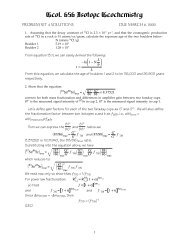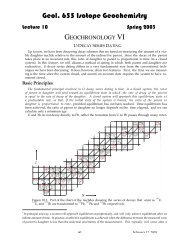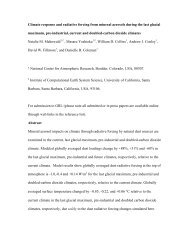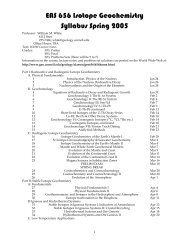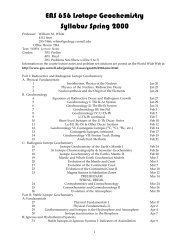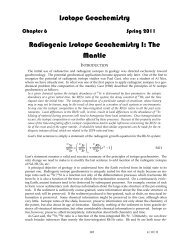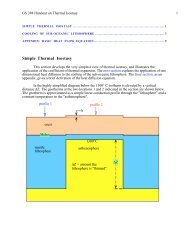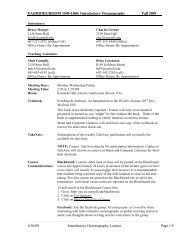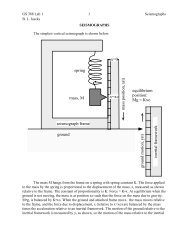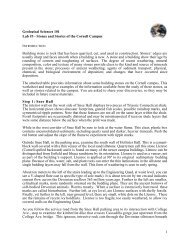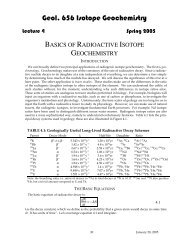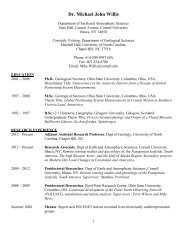Lab Handout
Lab Handout
Lab Handout
Create successful ePaper yourself
Turn your PDF publications into a flip-book with our unique Google optimized e-Paper software.
they immediately begin to erode. Thus erosion works to reduce the height of mountains while<br />
collision acts to increase this height.<br />
Examine the wooden blocks floating in the aquarium. Think of these blocks now as representing<br />
not ice bergs, but rather, the thick crust of mountain ranges.<br />
• "Erode" your mountains by removing one the blocks. What happens to the others<br />
(13) Use the measurements that you made in Experiment #1 to derive a formula that relates the<br />
submerged thickness of a wooden block (H s ) to the total thickness of the block (H), the density<br />
of water (ρ H2O) and the density of wood (ρ wood ). Hint: this will take the form of a<br />
proportionality.<br />
(13) Now consider the Himalayan mountains, with a crustal thickness of 70 km. Using the<br />
densities for crust and asthenosphere given above and your formula from (5), calculate (a) how<br />
much of the Himalayan crust "sticks up" as mountains and, (b) how much is hidden beneath our<br />
feet. For simplicity, consider the level of the water to be the reference level for these<br />
“mountains” as well.<br />
(15) Now erode the Himalayas. Use your answer from (6a) and erode the entire height of the<br />
Himalayas. What happened to the newly eroded surface Is the elevation of this newly eroded<br />
surface at sea level, or some other height (give the elevation)<br />
If you are interested, you can try more isostasy experiments at home at the Discover Our Earth<br />
web site. Check out http://www.geo.cornell.edu/hawaii/220/PRI/isostasy.html.<br />
6



